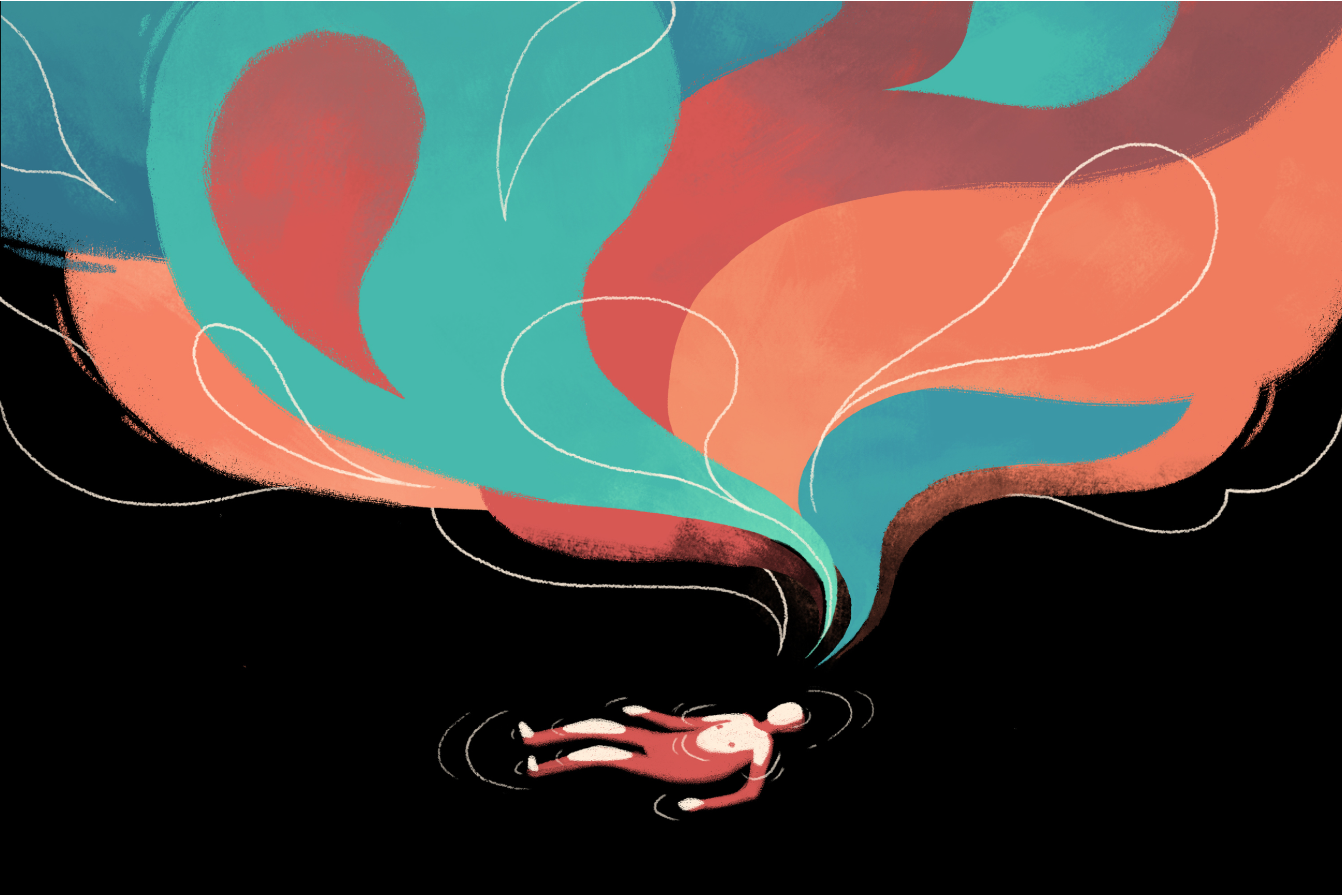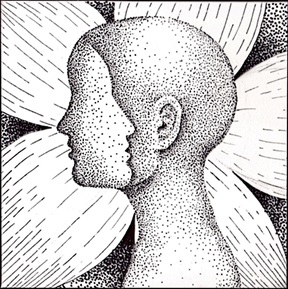In this piece, we discuss how we can use a floatation tank to increase our immersion and presence in Virtual Reality. If we look to our glossary, we see Presence within Virtual Reality (VR) defined as the degree to which the subject feels present in the virtual world. What is interesting to note, is that this naturally has to be viewed relatively to the degree that the subject feels present in the physical world — as we usually receive information from both our physical and our virtual environments.
There can thus be two separated approaches to designing for presence in virtual reality environments: one is to provide sensory stimulus of the virtual environment, and the other is to block sensory stimulus from the physical environment. Both approaches work towards the same goal of immersion — the encapsulation of the user in the VE. Slater and Wilbur (1997) recognise this in their definition of Immersion, which is closely related to the notion of Presence. They define immersion in terms of four qualities the system can afford, the first one of which is called inclusiveness. Inclusiveness they define as the extent to which physical reality is shut out.
Obviously, the principle of adding and removing sensory experience go hand in hand; by equipping a Head-Mounted Display you are blocking the physical impressions and replacing them with virtual impressions, all the while shielding for incoming light from the surroundings. Blocking light, however, is not the only way to deprive the senses of information from the physical environment. In this entry, we will discuss how we can maximize the inclusiveness of the immersion by achieving sensory deprivation in a floatation tank, whilst immersed in Virtual Reality!
Floatation Chambers
Floatation tanks, or sensory deprivation chambers— are pools of water with copious amounts of epsom salt (≈600kg). The floatation tanks are sealed for any incoming light and sound, and the air- and water temperature is equal to that of your body. When you lie down, you will feel how the salt makes you float even though the pool is very shallow. As you lie there, you notice how the ripples you created when lying down start to slowly subside as you sink down into weightlessness. After a while, because of the air- and water temperatures are the same as that of your body, you can no longer pinpoint where the water ends and the air around you begins. In fact, it gets hard to distinguish anything from anything else, including your body from the air and water. There is really nothing that is easy to grasp as isolated, save perhaps your breath. And as the minutes go, with total physical relaxation and lack of much sensory impression at all, things start to change.

The most significant, explicit change one may notice in the tank is that after a while your bodily self-consciousness is not what it used to be. Your mental model of where your body is in relation to the world around you starts to become blurred. Normally reinforced by tactile stimuli of air and water (of varying temperatures), and visual and auditive stimuli from the environment, your body model is now lacking information on which to create it. Your sense of spaciousness has also changed, that is the feeling of your position as defined relatively to say, the walls, mountains and sky has disappeared. You now really experience nothing around you, but neither any edges to this lack of information in your surroundings. You may get the feeling of floating in empty space — but where are you in all of this? What, in this stream of conscious experience is matter and what is mind?
Inner vs Outer

In our entry — ‘Inner as Outer: Projecting Mental States as External Reality‘ — we discussed the potential of using VR for meditation purposes in experimental ways. In the introduction to the entry, we discussed our feeling of Self as a duality of Inner and Outer, of which our everyday experiences usually comprise. We discussed how technology may have the power to transform our consciousness away from this traditional subject-object hierarchy and into a non-dual one, where the Inner is seen as the Outer, and the Outer as Inner. In this entry we are building further on these ideas. Similarly to visualising inner states in VR through biometrics, using VR in floatation tanks might provide illusory experiences where the conscious experience is significantly altered.
One other entry relevant to our experiments with VR in floatation tanks should be mentioned before we go on: the entry on Virtual Embodiment. In the entry, we discuss the great potential of VR to hack our consciousness; why it is possible, and what it can be used for. The research is highly relevant for floatation in VR, as both floatation tanks and VR alter our self-model, as both alter the sensory impressions necessary to maintain it.
Research on Virtual Embodiment in Floatation Tanks
Matrise partnered up with Bergen Flyt, a local company offering floatation therapy in the heart of Bergen city. We used a Samsung Gear VR with a Samsung S8 phone. We did not use a HTC Vive (Pro) as it would be more risky exposing the cable to water. Also, no room tracking or even much head orientation was needed, and in terms of resolution the HMD is quite high in ppi. We chose to first try out some abstract visualisations through the application “Fractal Lounge”, that shows varying psychedelic visuals and floating through space.
My Experience
“After I had showered, I put on the GEAR VR headset, started the application, and slowly entered the floatation pool. I held my hands towards the wall, as I did not see anything else than the visuals in the headset. When I was inside, I closed the glass door, and slowly lowered myself into the water — back first. It took a few seconds before I dared to lower my head all the way down, but very soon I was totally relaxed. As expected, the electronics in the display was kept well above water, due to the intense amount of salt in the water …”

“The visualisation pulsated, floated, drifted along — and often totally changed in colours and shapes. It took probably about ten minutes before my feeling of body totally vanished, to the degree that it was a larger gap between wanting to move the body and actually being able to move it than usual. I felt like perceiving a great drama and scene, and I got engaged in the forms and ways of the visualisations, sometimes quite invested in it, as it felt close and reality-defining for me. After about twenty minutes in, I felt as if I was drifting along in space at high speed, because of the steady movement of stars away from me. At the same time, there was no sound, which made the quick travel feel peaceful and smooth. As with normal floating, about every ten minutes there is a sort of reality-check moment where you remember you are in the tank and contemplate how weird it is. This also happened in VR, and was … equally as weird”
Reflections and Future Work
My first experiment with floatation in VR lasted for about 45 minutes. Sometimes, unfortunately, the VR headset glided slightly off my face, and I had to reposition it with my wet, salty fingers. After this happened about three times, I had to leave the tank in order to save the equipment.

My first experience of floating in virtual reality was very promising. The largest surprise was the feeling of movement through space at high speed. The largest frustration was the lack of any sort of interaction with ones surroundings at all, except the possibility to open and close one’s eyes. A great experiment would be to use eye tracking technology as a way of navigation in the vast, abstract psychedelic spaces. If one travelled towards where one saw, one could even be interactive while lying still in the floatation tank. This could also possibly have curious effects on which parts (perhaps the eyes), we identify with our selves. Perhaps the placement of our self could be altered by changing the agency for transportation.
Matrise will continue the cooperation with Bergen Flyt, and both try and develop different applications. Our plan is to measure the feeling of presence and self-identification and consciousness while in the tank.







Very interesting thank you 🙂
awesome. I had a garage lab working on just this. I am interested in sharing some of my ideas/plans
Thanks for the reply, and for also reaching out on Reddit. Looking forward to continue our conversation there.
Hi, I’d be interested to hear how your project develops. I’m investigating something similar.
Great stuff guys, if you would like to contribute to a discussion or share projects, feel free to contact me at joakim@matrise.no
This is great stuff!
i particularly liked the part where you wrote “but where are you in all of this?”
Using flotation tanks (or means of sensory restriction in general) can be quite useful in the self-inquiry process as it reduces the noise that the ego has to cling to. Traditional meditation approaches practically function in this way. Once you remove external stimuli and avoid moving the body, the subtle feeling of “who is watching all this” is more prominent.
Excellent work!
Very interesting experiment. And you also taught me what is a floation tank… I didn’t know it and I am now very intrigued by it!
this internet site is my inspiration , very great design and style and perfect articles.